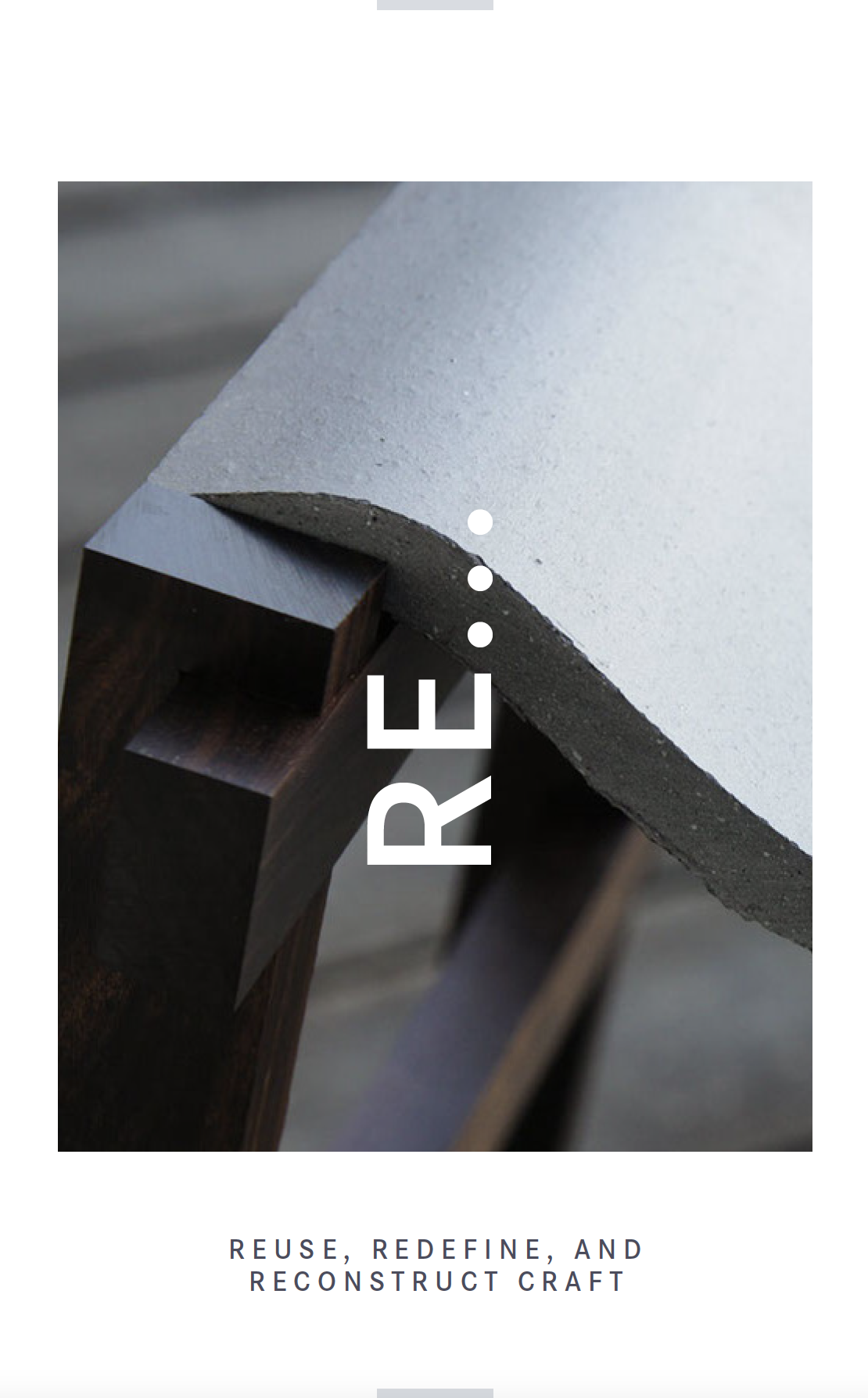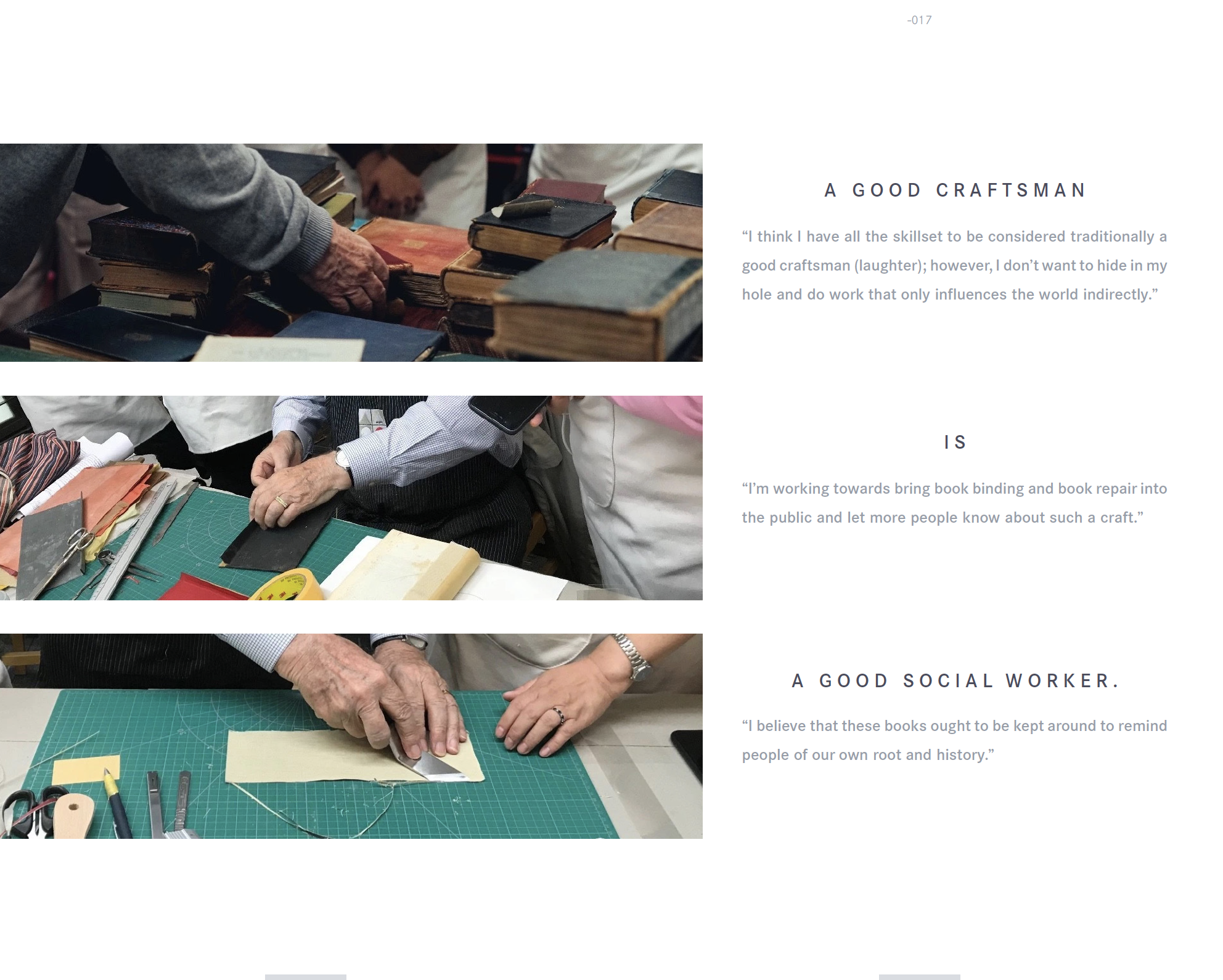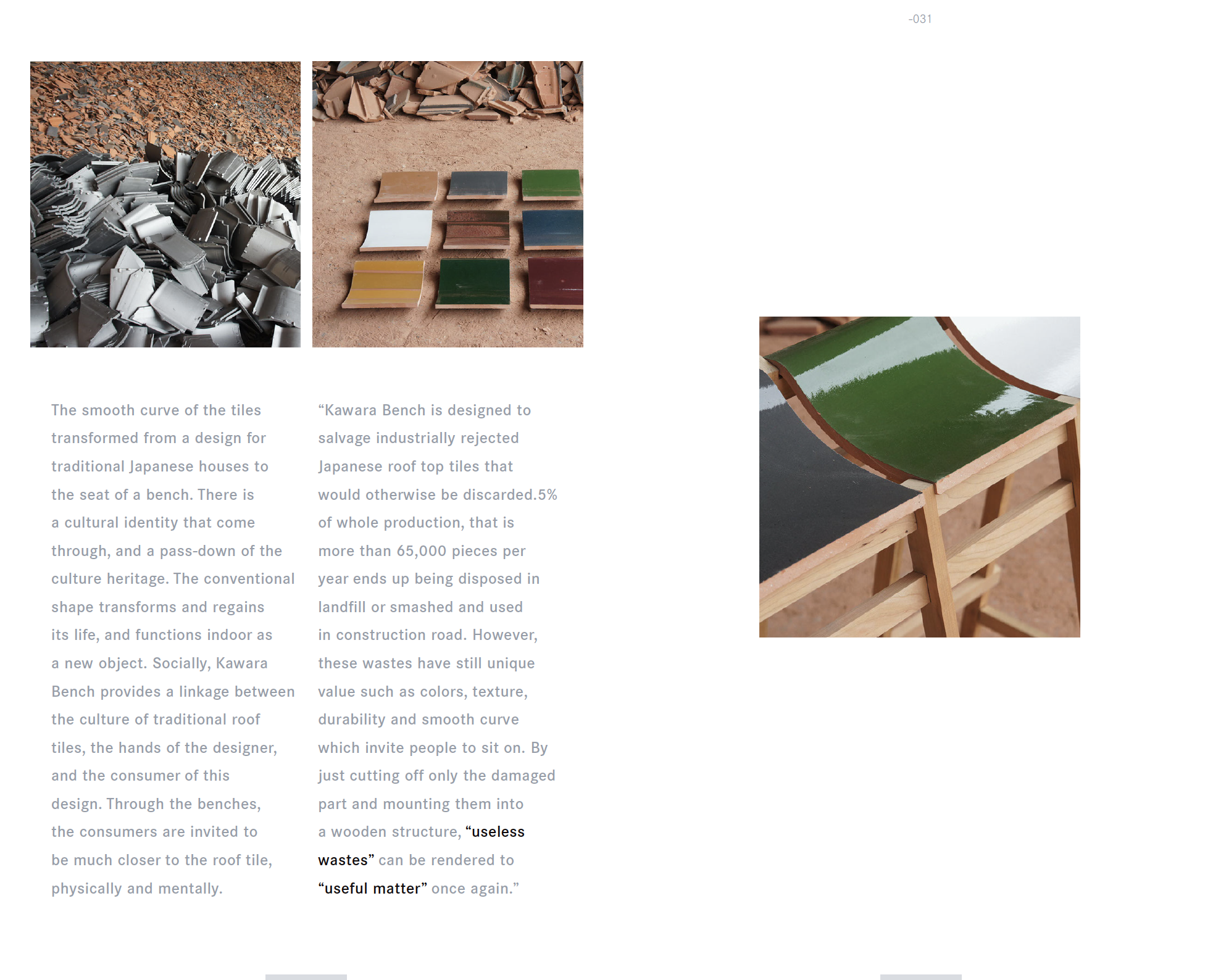RE… CRAFT
Sustainability has been an ongoing conversation within many industries, including design and craft. However, sustainability does not simply mean “green” production or eco-friendly materials. With the support of interviews and literature reviews, this book communicates my argument that a sustainable design should be considered and inspected from three perspectives: ecological, cultural, and social.
This is an individual project completed in 2020.
Book Word Count: 1620 words
Media: Digital
When the word “craftsman” is brought up to the table, what are some images that come up to mind? Beautiful “high-end” personalized objects, small studios with old hand tools, or Sunday knitting group? Craftsmen can range from luxury crafts artisan to Etsy hobbyist.
However, we ought to realize that craftsmen are much more than skilled manual laborers. Today, the consumer society changes towards owning a better lifestyle rather than owning every possible produced object; the craftsmen, as designer-makers, have the responsibility of redefining craft as a sustainable and productive force in our society through three lenses: ecological, cultural, and social.
Sustainability has been an ongoing conversation within many industries, including architecture, industrial design, and other design fields. Within these fields, crafts seem to be slightly out of place due to their low-tech, low production characteristics. (It feels perfectly sustainable!) However, one can easily overlook the fact that sustainability does not simply mean “green” production or using degradable eco-friendly materials. In addition to the ecological perspective, a sustainable design should also be considerate of its cultural and social value.
This brief book tries to persuade that a good craftsman needs to be a good social worker who works toward the three categories of sustainability, through reconstructing craft as a less marginalized element in the society and redefining crafts’ social and cultural values.







